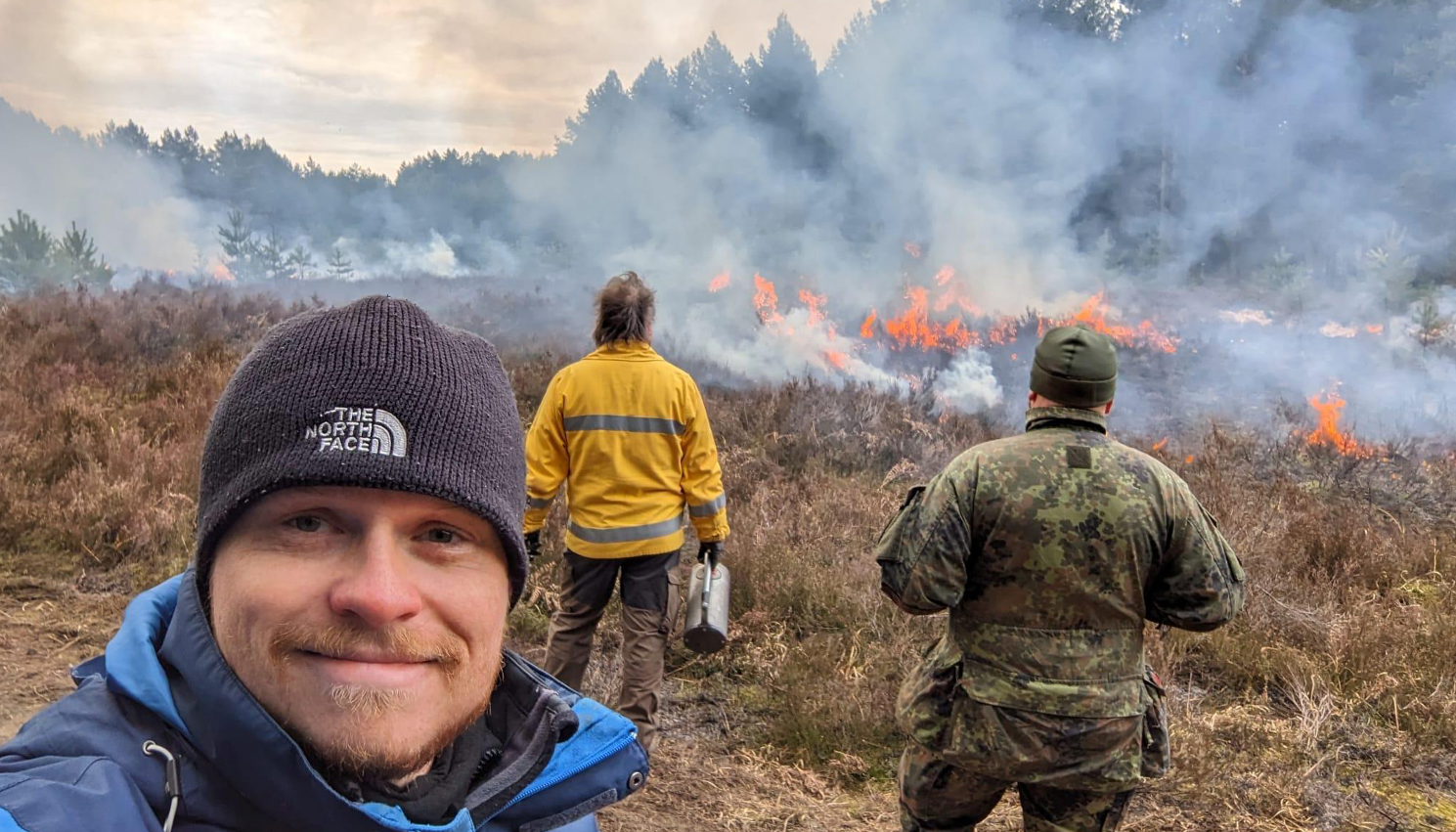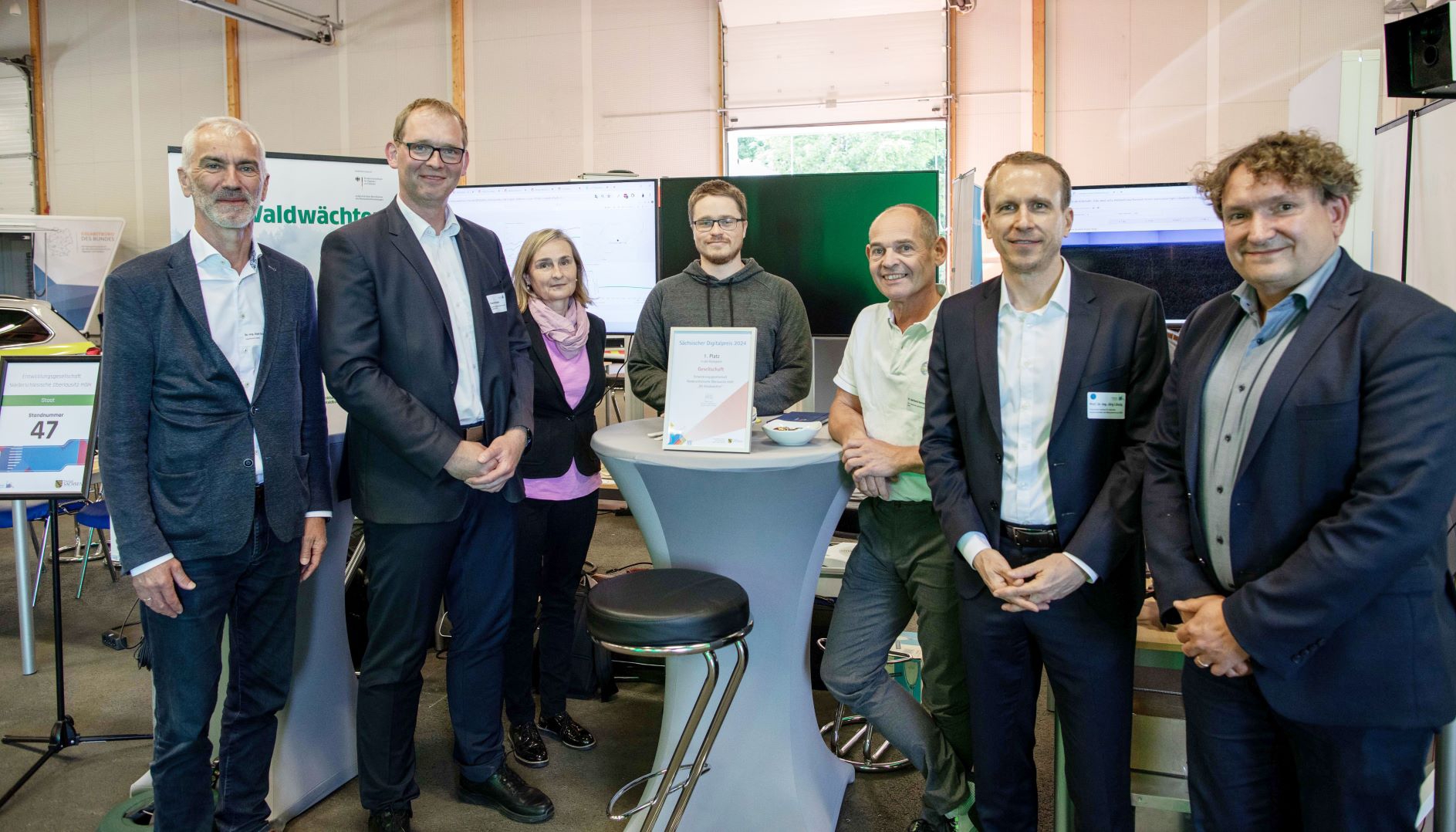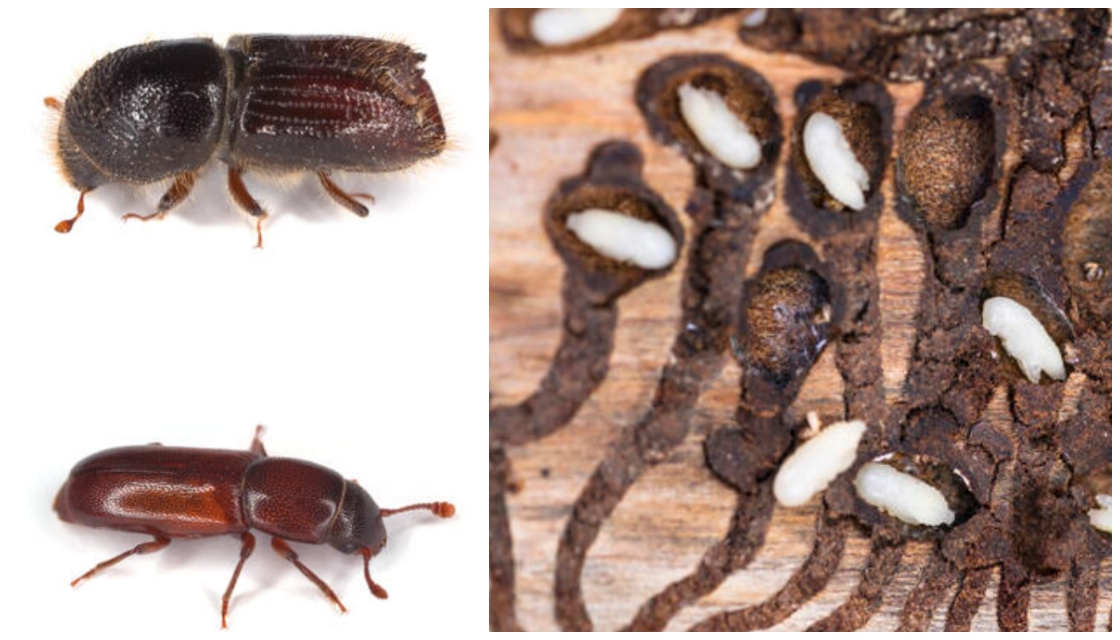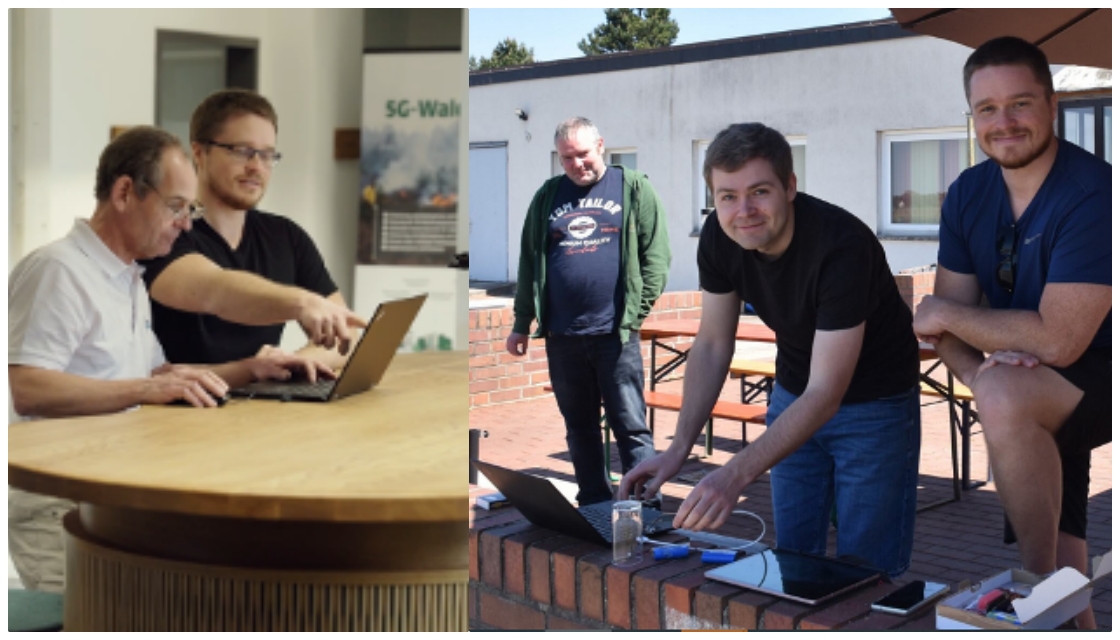sustainability
Everything about the 5G forest guard
- sustainability
- Hits: 1372

The winner of the Saxon Digital Prize - all the background information and interesting facts about the award-winning 5G Forest Watch project with project manager Henry Poppitz
In June, the 5G Forest Watcher first place, worth 25,000 euros, at the 2nd Saxon Digital Prize in the “Society” category. The prize was awarded by Saxon State Minister Martin Dulig as part of the “forum sachsen digital” organized by the Saxon State Ministry for Economic Affairs, Labor and Transport (SMWA) in the exhibition and event park in Löbau. Henry Poppitz on this important and groundbreaking project for ENO, which is playing a key role in overseeing this project for the district We are pleased that he took the time to answer some background questions on the UBL blog.

Henry (behind the certificate) and the 5G forest guard team at their stand
Hello Henry! Congratulations on winning the Saxon Digital Prize! How did the idea of applying for the 5G Forest Guard project and presenting your project at the “forum sachsen digital” come about?
Dr. Dr. told us about the “Saxon Digital Prize” competition. Jasper von Detten (legal advisor in the project) was made aware of this. We were initially unsure whether an application would make sense because we didn't quite cover the defined core topic. Ultimately, forest protection is a very important social issue and the preservation of wood as a resource fit well into the focus of the argument, which is why Dr. Axel Schulz (technical consultant in the project) and I advertised our project in an elaborate “last-minute campaign”. At this point, many thanks again to Dr. von Detten for the idea and Dr. Schulz for the extensive support with the application.
The idea of presenting the project as an exhibitor at the “forum sachsen digital” came from me. When our business partners GGS (Dr. Gerhard Kemper) and exelonix (Dr. Matthias Stege ) as well as Dr. Schulz also expressed their interest and participation, the decision was made quickly. Thanks to the two companies, we had enough practical project elements to show “you could touch” and not “just” screens with graphics and numbers.
What challenges have you and the team had to overcome so far while implementing the project?
A major challenge is the organization and, above all, the implementation of practical tests with open fire. We have the opportunity to carry out controlled test fires in smaller forest areas Oberlausitz military training area However, this is only possible under certain weather conditions and during certain periods. Unfortunately, we have already had to cancel 4 large fire tests because the weather was too humid and/or too cold. These tests require a lot of preparation work for everyone involved and the cancellations at short notice were very annoying. We were able to partially compensate for this by organizing smaller fire bowl tests at short notice, but of course these tests only achieve the same effect in testing the technology to a very limited extent as a larger fire. And we have also had to cancel several of these tests at short notice. It shouldn’t be too “nice” or hot and dry because the increased forest fire warning level will throw a spanner in the works.

Bark beetles eat their tunnels under the bark of spruce trees
Looking for a bark beetle specialist
Another challenge for us is the issue of bark beetles. Unfortunately, we lack an expert in this field who is particularly familiar with the behavior and biochemistry of these animals. We want to be able to detect the infestation as early as possible, but this requires precise information about the mating behavior and the biochemical composition of the animals' sex pheromones. In this subject area, our project team is primarily Dr. Thorsten Dräger from exelonix was hired and started to look into it more intensively.
What is the basic idea behind “5G Forest Watcher”, which technologies are used and how do they interact on the military training area?
The ideal is briefly summarized: In the project area there are cameras (which can take pictures in several spectral ranges of light), numerous sensors (measuring a wide range of values, such as light incidence, soil moisture, temperature, etc.) and flue gas sensors that collect data at regular intervals send to a central server. As soon as noticeable deviations from the normal state of the forest are detected, the affected area can be monitored more closely and, if necessary, a drone can transmit additional information with images in real time to assess the situation. If the suspicion of a fire intensifies, the control center will be informed. Or maybe it was just a car or a tank that kicked up dust. Then the all-clear can be given. However, should an emergency arise, another goal of the project is to provide the emergency services on site with the best possible real-time data in order to be able to assess the development of the situation. Every firefighter should also be covered by the technology and thus be able to be protected if, for example, the wind changes and someone is in danger of being trapped by the flames.
The background is explained in more detail on the project website www.digitaler.landkreis.gr
Have concrete results been achieved through the project, particularly in the area of early detection of fires and pest infestations?
Yes, we have already achieved good partial successes in all project areas. For example, we discovered that the smoke detection sensor is also suitable for detecting the synthetic sex hormones of some bark beetle species. The cameras can also detect smoke from long distances and distinguish it from ground fog or dust. The first upstream AI units are running on the drones and the first AI modules have already been installed on the central server. A fire that started during a shooting exercise has already been discovered.
How does the project contribute to sustainable forestry and climate protection?
The technology can be extremely helpful, especially in very large, remote forest areas, in order to detect sources of fire or pest infestations at an early stage. Unfortunately, we recently experienced in Saxon Switzerland how quickly such a fire can now spread in our latitudes. In this respect, the preservation and protection of the forest ecosystem can be significantly supported if early intervention can be made in moments of danger.
Healthy forests contribute to a healthy climate, but I would rather say that our project is more of a good contribution to climate resilience than to climate protection.
The project brings together numerous partners from science and business. How important was this cooperation for the success of the project?
This combination is essential. Basic research is important, but we also need a concrete application and practical orientation so that something can be done “in real life” with the scientific findings. We are therefore very happy that we have two very motivated companies at our side: GGS from Speyer and exelonix from Dresden You work closely with the universities and research institutions involved in the project and help put the research content into practice.
How did you as a team experience the success of the “forum sachsen digital” and the award ceremony?
Due to the combination of the trade fair and the awards ceremony, we were there in large numbers since early in the morning. The tension slowly increased towards the late afternoon. It was of course a nice feeling to end this long day with first place - especially considering that we “almost” didn’t apply.

Challenging and varied: Dr. Gerhard Kemper and Henry Poppitz analyzing data (left) - System administrator Robert Pietsch and Henry Poppitz from ENO with Bennet Kaluza from BTU preparing the gas sensors for a fire bowl test
Is there a special anecdote or experience from project work that you would like to share with us?
As already mentioned, we lack a real expert in the area of bark beetles. We therefore began to search for expertise across the region and were or are still in contact with stakeholders from various universities. Funnily enough, the people in question have been called “Müller” three times and “Möller” once. One could assume a direct proportionality between this name and knowledge of the bark beetle ;-) In this context, a small appeal: We are still open and grateful for every expert
Thank you for the interesting conversation, dear Henry - and good luck for the future!
Thank you for rating this post.
